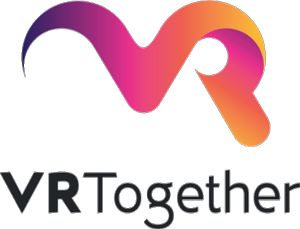
How we’re tackling low-latency challenges
In order to make VR-Together a truly interactive experience, users need to be able to interact in real-time with the situations they are living, and with other users’ actions. However, given the required amount of data generated by our volumetric representation technology and bandwidth considerations, we need a solution to maintain a low-latency delivery of users’ representation.
That’s why VR-Together uses CMAF (Common Media Application Format), a format designed to offer a common interface for media content and enabling low-latency delivery. CMAF brings reduced storage size requirements on the CDN side, by making the audiovisual data common between HLS and DASH – whether the format used by the player. In our case, we’re using DASH as adaptive streaming format for our player, to ensure a continuous stream and the best quality throughout the whole experience.
The low-latency mode works by breaking the segmented content into chunks of a fixed duration. These chunks can then be published as they are being created and consumed before the audiovisual fragment has been entirely generated. This method results in an average of 1-3 seconds latency instead of 10-30 seconds.
As a content protection and conditional access provider, the key challenge for our contributor Viaccess-Orca in this context of OTT low-latency is the delivery of DRM licenses in a minimum amount of time: switching to an encrypted stream should not add any delay for the user. The DRM solution of VO is compatible with CMAF and optimizes the license’s delivery delay, and thus improves the user’s experience.
For more information about CMAF and OTT Low Latency, you can read the dedicated article on Viaccess-Orca’s website.
Come and follow us in this VR journey with i2CAT, CWI, TNO, CERTH, Artanim, Viaccess-Orca, Entropy Studio and Motion Spell.

This project has been funded by the European Commission as part of the H2020 program, under the grant agreement 762111.








